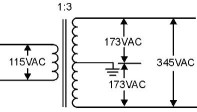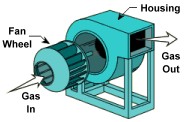Dictionary of Electronics Terms
"A"
"B"
"C",
"D",
"E",
"F",
"G",
"H",
"I",
"J",
"K",
"L",
"M",
"N",
"O",
"P",
"Q",
"R",
"S",
"T",
"U",
"V",
"W",
"X",
"Y",
"Z"
'Ca' to 'Cas', 'Cat' to 'Cg', 'Ch', 'Ci' to 'Cl', 'Cm' to 'Com',
'Com', 'Com' to 'Con', 'Con' to 'Coo', 'Cop' to 'Cq', 'Cr', 'Cs' to 'Cz'
Catcher Grid. In a velocity-modulated tube, a grid on which the spaced electron groups induce a
signal. The output of the tube is taken from the catcher grid.
Category 3. The ANSI/EIA/TIA-568 designation for 100-ohm unshielded twisted-pair cables and
associated connecting hardware whose characteristics are specified for data transmission up to 16 Mb/s. [EIA568 Bus Description]
Cathode. The general name for any negative electrode. The negative terminal of a forward-biased semiconductor
diode, which is the source of the electrons. The electrode to which the forward current flows within the device. In an electron tube the electrode that is the source of current flow.
Cathode Bias. The method of biasing a vacuum tube in which the biasing resistor is placed in the
common-cathode return circuit, thereby making the cathode more positive with respect to ground.
Cathode Keying. A system in which the cathode circuit is interrupted so that neither grid current nor
plate current can flow.
Cathode Modulator. Voltage on the cathode is varied to produce the modulation envelope.
Cathode-Ray Tube. [CRT] An electron tube that has an electron gun, a deflection system, and a
screen. This tube is used to display visual electronic signals. [CRT Graphic]
Cathode Sputtering. A process of producing thin film components.
Cavity Resonator. A space totally enclosed by a metallic conductor and supplied with energy in
such a way that it becomes a source of electromagnetic oscillations. The size and shape of the enclosure
determine the resonant frequency.
Cavity. The void that holds the component in a tape and reel delivery system. The void in a semiconductor package that holds the semiconductor die within the package.
Cavity Up / Cavity Down. The orientation of the package body cavity opening, away from the seating plane
for cavity-up or toward the seating plane for cavity-down. The cavity orientation of an integrated circuit which holds the semiconductor die [the semiconductor die and pad facing up or down]. Read more about the IC Cavity Orientation.
Cavity Wavemeter. An instrument used to measure microwave frequencies.
Cell. A single unit that transforms chemical energy into electrical energy. Batteries are made up of cells. [Battery Manufacturers]
CD. See Compact Disk.
Center Frequency. In frequency modulation, the rest frequency, i.e., the frequency of the unmodulated carrier. The average frequency of a signal when modulated by a symmetrical signal.
Center-Feed Method. Connecting the center of an antenna to a transmission line which is then
connected to the final (output) stage of the transmitter.
Center-Tapped Transformer. A Transformer with a tap on the secondary winding mid-way between the winding producing half the available output voltage.
Centimeter Cube. A unit of volume of large rectangular or square conductors. The cross-sectional
area equals 1 square centimeter with a length of 1 centimeter. Also refer to the Centimeters Squared to Inches Squared Conversion table.
Central Processing Unit. [CPU] In Personal Computers {PCs] the microprocessor chip that executes programmed instructions.
Centrifugal Fan. A non-positive displacement mechanical device having a centrifugal fan impeller inclosed within a housing. It is designed to move air or gas over a wide range of volumes and pressures. The air or gas is drawn in axially and discharged radially or drawn in radially and discharged axially by centrifugal force through an outlet in the housing.
Centrifugal Impeller Fan. An item with blades, vanes, or paddles equally spaced radially or horizontally around the periphery of a hub, rotor, or wheel. It is the rotating part of a centrifugal fan, electric motor, or generator which creates a flow of air or gas perpendicular to the axis of rotation.
Ceramic Capacitor. A capacitor that uses a ceramic material as a dielectric. Refer to the Dictionary of Capacitor Terms.
Cermet. A metal dielectric composed of both ceramic [cer] and metallic [met] materials.
Cesium Clock. An atomic clock. A clock that uses cesium as the reference to keep time [the energy emitted by cesium atoms].










